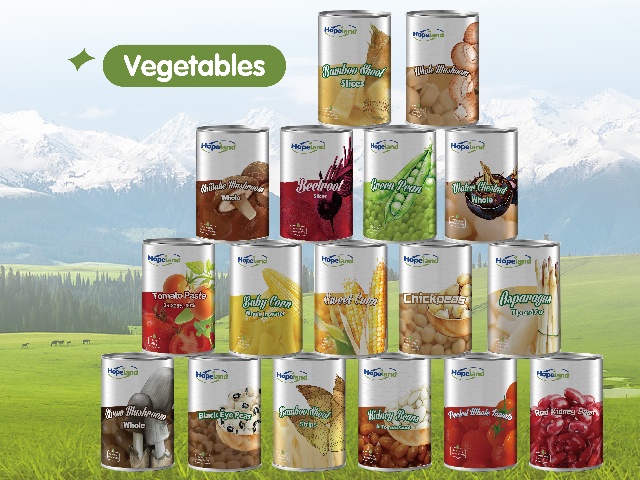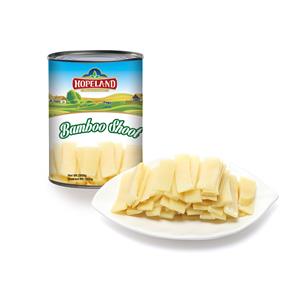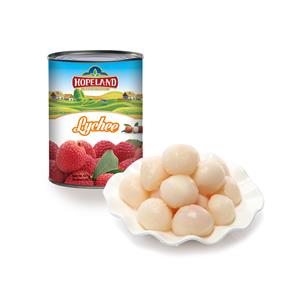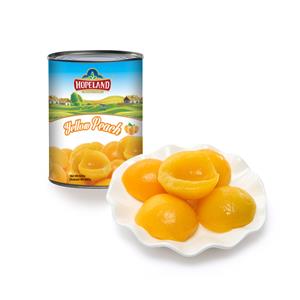What Canned Foods Should I Stock Up on for Winter?
A Complete Guide to Smart, Nutritious, and Practical Winter Pantry Planning
Winter is a season that invites warmth, comfort, and hearty meals, but it can also bring unpredictable weather, limited access to fresh produce, and occasional disruptions in shopping routines. That’s why stocking up on canned foods before the cold months arrive is not only practical—it’s one of the most reliable ways to ensure your kitchen stays well-supplied, nutritious, and ready for any situation.
Canned foods have long been a cornerstone of winter preparedness. They last for months or even years, are budget-friendly, easy to store, and extremely versatile in both everyday cooking and emergency meals. Whether you’re preparing your home for storms, planning cozy comfort dishes, or simply avoiding frequent grocery trips, the right collection of canned items can transform winter cooking into a stress-free, flavorful experience.
This comprehensive guide will walk you through the best canned foods to stock up on for winter, why they matter, and how to strategically build a pantry that balances convenience, nutrition, and taste.

1. Why Canned Foods Are Essential for Winter Preparedness
Before exploring specific items, it’s important to understand what makes canned foods uniquely valuable during winter months.
Long Shelf Life
Canned foods typically last 1–5 years depending on the product, packaging, and storage conditions. This shelf stability makes them ideal for stocking up before winter.
Nutrient Retention
Contrary to old misconceptions, modern canning processes preserve a high amount of vitamins, minerals, and antioxidants. Many canned vegetables are processed within hours of harvest, locking in nutrients at peak freshness.
Weather-Proof Food Supply
Heavy snow, icy roads, and extreme cold can make grocery runs difficult or impossible. A robust winter pantry ensures you always have ingredients on hand.
Convenience for Hearty Winter Cooking
Winter meals tend to be warm and comforting—think stews, soups, casseroles, and braises. Canned foods like tomatoes, beans, and broths excel in these dishes.
Emergency Preparedness
Winter power outages happen. Canned foods allow you to prepare meals even without electricity, especially if they are ready-to-eat or require minimal heating.
2. Essential Categories of Canned Foods for Winter
To assemble a winter-ready pantry, it’s helpful to think in categories. A balanced selection ensures you can build complete meals anytime.
✔ Vegetables
✔ Fruits
✔ Proteins
✔ Soups and Broths
✔ Tomato-Based Products
✔ Beans and Legumes
✔ Ready-to-Eat Meals
✔ Baking and Specialty Items
Each category contributes something important, whether it’s nutrients, flavor bases, or meal-building power.
3. Best Canned Vegetables to Stock for Winter
Vegetables are a winter essential because fresh options become more expensive and limited in variety. Canned vegetables offer reliable nutrition and long life.
3.1 Canned Corn
Corn adds sweetness, texture, and color to winter dishes.
Uses:
Corn chowder
Casseroles
Fried rice
Chili and stews
Cornbread mix-ins
3.2 Canned Green Beans
Green beans are one of the most popular canned vegetables for holiday cooking.
Uses:
Green bean casserole
Stir-fries
Soups and stews
Quick side dishes
3.3 Canned Tomatoes (Whole, Diced, Crushed)
A winter pantry must-have. Tomatoes are the flavor base for countless warm dishes.
Uses:
Pasta sauces
Chili
Stews
Curries
Braised meats
3.4 Canned Peas and Carrots
These mixed cans save time and add color and nutrients.
Uses:
Fried rice
Pot pies
Chicken noodle soup
3.5 Canned Potatoes
Pre-cooked potatoes are extremely convenient for winter recipes.
Uses:
Roast with herbs
Soups
Breakfast hash
Mashes and casseroles
3.6 Canned Mushrooms
A long-lasting alternative to fresh mushrooms, perfect for winter comfort dishes.
Uses:
Stir-fries
Pasta
Stews
Pizza toppings
3.7 Canned Baby Corn
Great for Asian-inspired winter cooking.
Uses:
Hot pot
Stir-fry
Noodle soups
4. Best Canned Fruits for Winter
Winter is low in fresh seasonal fruit diversity, so canned fruits help ensure steady intake of vitamins and antioxidants.
4.1 Canned Peaches
Delicious, soft, and versatile.
Uses:
Winter fruit crisps
Smoothies
Oatmeal toppings
Salad additions
4.2 Canned Pineapple
Bright acidity helps balance heavy winter meals.
Uses:
Sweet-and-sour dishes
Pizza toppings
Holiday ham glaze
Smoothies
4.3 Canned Mandarin Oranges
Refreshing citrus perfect for winter immunity support.
Uses:
Fruit salads
Baking
Breakfast bowls
Desserts
4.4 Canned Mixed Fruits
Great for family-friendly desserts and snacks.
Uses:
Fruit cocktails
Yogurt bowls
Holiday puddings
5. Best Canned Protein Sources for Winter
Protein-rich canned items are your biggest ally during winter—long-lasting, nutrient-dense, and meal-building.
5.1 Canned Tuna (Chunk/Flake/Bonito)
Lean, high-protein, and endlessly versatile.
Uses:
Tuna salad
Pasta
Sandwiches
Casseroles
Rice bowls
5.2 Canned Sardines and Mackerel
Rich in omega-3s and perfect for hearty winter meals.
Uses:
Toast toppings
Pasta dishes
Rice meals
5.3 Canned Chicken
A great shortcut when fresh chicken isn’t available.
Uses:
Soups
Pot pies
Pasta
Wraps
5.4 Canned Pork and Beef
Ideal for quick winter stews.
Uses:
Hearty casseroles
Rice and noodles
Slow-cooked style dishes
5.5 Canned Beans (Protein-Rich Legumes)
Beans serve as both protein and fiber sources.
Best options:
Chickpeas
Kidney beans
Black beans
White beans
Lentils
Uses:
Chili
Stews
Curries
Salads
Hummus
6. Soups, Broths, and Stews—Winter Comfort Essentials
6.1 Canned Soups
Great for quick meals when staying warm is the priority.
Popular options:
Chicken noodle soup
Tomato soup
Vegetable soup
Potato chowder
Cream of mushroom (also a cooking ingredient)
6.2 Canned Broths and Stocks
Broth is the backbone of winter cooking.
Use for:
Soups and stews
Braising
Risotto
Sauces
Stock up on:
Chicken broth
Beef broth
Vegetable broth
7. Tomato-Based Products to Always Have on Hand
Tomatoes provide acidity and umami essential for winter dishes.
Stock up on:
✔ Tomato paste
✔ Crushed tomatoes
✔ Tomato sauce
✔ Whole peeled tomatoes
These form the base of:
Chili
Spaghetti sauce
Curry
Shakshuka
Stews
Pizza sauce
8. Ready-to-Eat Canned Meals for Emergencies
Not every winter day allows time for cooking, especially during power outages or severe weather.
Great options include:
Canned chili
Baked beans
Beef stew
Chicken curry
Spaghetti with meat sauce
Canned ravioli
These meals require minimal effort and provide warmth and comfort.
9. Specialty and Baking Canned Goods for Winter
Holiday cooking and winter baking often call for canned staples you may overlook.
9.1 Evaporated Milk
Used in:
Creamy soups
Desserts
Custards
Hot drinks
9.2 Sweetened Condensed Milk
Used in:
Holiday candies
Caramel
Coffee drinks
Baking
9.3 Coconut Milk
Great for vegan or Asian-inspired winter meals.
Uses:
Curries
Soups
Baking
9.4 Pumpkin Purée
A winter star ingredient.
Uses:
Pies
Bread
Lattes
Soups
9.5 Canned Beans for Holiday Baking
Chickpeas and white beans blend well into:
Brownies
Cookies
High-fiber desserts
10. Building a Strategic Winter Canned Food Pantry
Now that we have the categories covered, here’s how to stock efficiently and avoid waste.
10.1 Balance Your Pantry
Aim for a mix like:
40% vegetables and tomatoes
25% protein sources
20% fruits
15% soups, broth, and specialty products
10.2 Choose Variety
Different flavors keep winter meals interesting. Stock multiple vegetable types, proteins, and fruits.
10.3 Focus on Meals You Already Cook
If you love:
Chili → stock beans, tomatoes, corn
Pasta → stock tomato sauce, mushrooms
Asian dishes → stock baby corn, bamboo shoots, coconut milk
10.4 Organize Your Stock
Group by category and place soon-to-expire cans at the front.
10.5 Rotate and Replenish
Use what you stock and restock in early winter or during sales.
11. Top 20 Must-Have Canned Foods for Winter (Quick List)
Here’s a fast shopping list summarizing everything:
Vegetables
Corn
Green beans
Tomatoes (diced/whole/crushed)
Peas & carrots
Potatoes
Mushrooms
Baby corn
Fruits
Peaches
Pineapple
Mandarin oranges
Mixed fruit
Proteins
Tuna
Sardines/mackerel
Chicken
Beans (chickpeas, kidney, black, white)
Soups & Broths
Chicken broth
Vegetable soup
Cream soups (mushroom/chicken)
Specialty
Coconut milk
Evaporated milk
12. Easy Winter Recipes Using Canned Foods
To help you put your pantry to use, here are some simple recipe ideas.
12.1 Winter Tomato & White Bean Soup
Ingredients:
Canned diced tomatoes
Canned white beans
Chicken broth
Mushrooms
Garlic (fresh or powder)
12.2 Tuna & Sweet Corn Chowder
Ingredients:
Canned tuna
Canned corn
Canned potatoes
Onion, cream, herbs
12.3 Pineapple Chicken Stir-Fry
Ingredients:
Canned pineapple
Canned baby corn
Soy sauce
Fresh or canned chicken
12.4 Hearty Chili
Ingredients:
Canned beans
Canned tomatoes
Corn
Ground beef or canned beef
12.5 Mandarin Orange Salad
Ingredients:
Canned mandarins
Lettuce
Nuts
Light vinaigrette
13. Tips for Storing Canned Foods Properly in Winter
Store in a cool, dry area
Avoid direct sunlight or moisture-heavy basements.
Keep off concrete floors
Use shelves to prevent rusting.
Label with expiration dates
Use a marker if necessary.
Don’t freeze cans
Freezing can damage the seal or cause the can to burst.
Conclusion: A Well-Stocked Winter Pantry Means Comfort, Security, and Delicious Meals
Preparing for winter doesn’t have to be stressful. With the right selection of canned vegetables, fruits, proteins, broths, and specialty items, you can fill your pantry with ingredients that keep your meals nutritious, comforting, and easy to prepare—no matter how cold or unpredictable the season becomes.
Canned foods offer unmatched convenience during winter. They help you stay prepared for storms, cook comforting meals every day, reduce grocery trips, and provide peace of mind knowing you always have something healthy and delicious ready to use.
Stock smart, rotate regularly, choose foods you enjoy, and let your winter pantry support you with warmth, nourishment, and flavor all season long.




